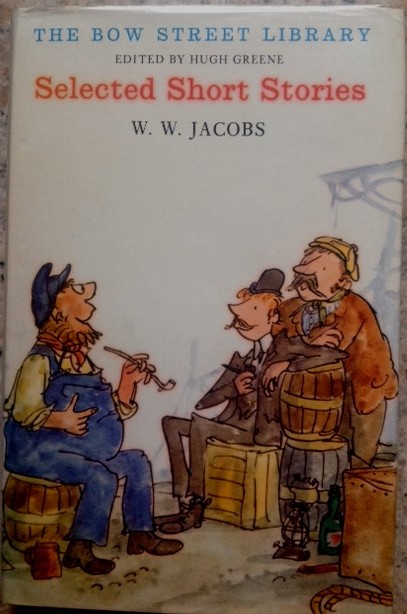Inspiring Older Readers
 posted on 10 Dec 2020
posted on 10 Dec 2020
Selected Short Stories by W.W. Jacobs
In many ways, British born short story writer, William Wymark (W.W.) Jacobs is the epitome of the forgotten author. His reputation has faded to such an extent that he has virtual disappeared from public consciousness. Having said that, he was hugely admired by many peers and contemporaries and there are still readers who consider his short story writing a model of the genre – but in truth these advocates are few and far between now.
Born in 1863 he flourished as an example of an Edwardian humourist and occasional horror story writer and, if he’s remembered at all, it’s usually for his story ‘The Monkey’s Paw’. And it was this story that prompted me to pick up his collection of short stories edited by Hugh Greene in the Bodley Head ‘Bow Street Library’ series.
Just a few days ago I happened upon an extensively rewritten and melodramatic black and white British movie ‘inspired’ by Jacobs’ story and, entertaining as it was, it was no more like the original tale than the Simpson’s cartoon episode that also featured the myth of the magical monkey’s paw.
The story of The Monkey’s Paw may in fact be familiar to you even if you’ve never read the story or seen the film because it’s the kind of apocryphal story or urban myth that circulates mysteriously as if it is lingering in the ether. A traveller, returned from the mysterious East, brings back a desiccated monkey paw that reputedly grants its owner three wishes. A family, avaricious for wealth, wheedle their way to ownership of the paw and despite dire warnings from its erstwhile guardian demand fulfilment of their wishes. They try for what seems a quite modest nest-egg just to check it works; only to find it does – but at a dreadful price.
But although this single story accounts for much of whatever fame Jacobs still has, it’s not really representative of his output. What he really specialises in are tongue-in-cheek tales of working people – most often sailors or coastal fishermen and merchant seamen – all told in a sort of phonetic local diction that emphasises a sort of folk-tale atmosphere. Hugh Greene in his short introduction captures this quite concisely:
“What is lasting in Jacobs’ stories and novels is his creation of a world of cheap sailors’ lodging houses in the Port of London, the wharves of Wapping, little coastal steamers, small towns on the Thames estuary fully of cosy pubs and retired sea captains and, in a different key, the village of Claybury…where the oldest inhabitant sits in the ‘Cauliflower’ telling tall stories….”
Wodehouse and Evelyn Waugh were fans of Jacobs and he was friends with Jerome K Jerome and H.G. Wells – although he was politically more in tune with Waugh than Wells. Some of his more regressive social attitudes come to the surface most clearly in his treatment of women – who are largely dismissed as dangerous. Again Greene puts his finger on this too:
“His older women are nagging shrews not above a bit of physical violence when their husbands misbehave themselves. His younger women are artful liars who once they have, like carnivorous plants, got their prey in their clutches proceed to grow like their mothers.”
I wearied pretty quickly of all this I have to say and having sampled a range of stories - close to double figures – I’d had enough.
Perhaps not surprisingly, there are plenty of short story compilations featuring Jacobs available cheaply in both paper and hardback on all the online book marketplaces - if you’re curious or a particular fan of Edwardian writers.
Terry Potter
December 2020